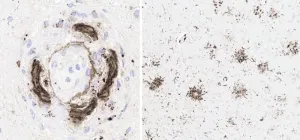Contact: Mark Couch, 303-724-5377, mark.couch@cuanschutz.edu
Where Do Our Limbs Come From?
AURORA, Colo. (May 24, 2023) – An international collaboration that includes scientists from the University of Colorado School of Medicine has uncovered new clues about the origin of paired appendages – a major evolutionary step that remains unresolved and highly debated.
The researchers describe their study in an article published today in the journal Nature.
“This has become a topic that comes with bit of controversy, but it’s really a very fundamental question in evolutionary biology: Where do our limbs come from?” says co-corresponding author Christian Mosimann, PhD, associate professor and Johnson Chair in the Department of Pediatrics, Section of Developmental Biology at CU School of Medicine.
That question – where do our limbs come from? – has been subject of debate for more than 100 years. In 1878, German scientist Carl Gegenbaur proposed that paired fins derived from a source called the gill arch, which are bony loops present in fish to support their gills. Other scientists favor the lateral fin fold hypothesis, concluding that lateral fins on the top and bottom of the fish are the source of paired fins.
“It is a highly active research topic because it’s been an intellectual challenge for such a long time,” Mosimann says. “Many big labs have studied the various aspects of how our limbs develop and have evolved.” Among those labs are Dr. Mosimann’s colleagues and co-authors, Tom Carney, PhD, and his team at the Lee Kong Chian School of Medicine at Nanyang Technological University in Singapore.
Chasing the odd cells
For Mosimann, the inquiry into where limbs come from is an offshoot of other research conducted by his laboratory on the CU Anschutz Medical Campus. In his laboratory, his team uses zebrafish as a model to understand the development from cells to organs. He and his team study how cells decide their fate, looking for explanations for how development can go awry leading to congenital anomalies, in particular cardiovascular and connective tissue diseases.
Along the way, Mosimann and his lab team observed how a peculiar cell type with features of connective tissue cells, so-called fibroblasts that share a developmental origin with the cardiovascular system, migrated into specific developing fins of the zebrafish. It turns out that these cells may support a connection between the competing theories of paired appendage evolution.
“We always knew these cells were odd,” he says. “There were these fibroblast-looking cells that went into the so-called ventral fin, the fin at the belly of the developing zebrafish. Similar fibroblast cells didn’t crawl into any other fin except the pectoral fin, which are the equivalent of our arms. So we kept noticing these peculiar fibroblasts, and we could never make sense of what these were for many years.”
The Mosimann lab has developed several techniques to track cell fates during development in pursuit of their main topic, which is an improved understanding of how the embryonic cell layer, called the lateral plate mesoderm, contributes to diverse organs. The lateral plate mesoderm is the developmental origin of the heart, blood vessels, kidneys, connective tissue, as well as major parts of limbs.
The paired fins that form the equivalent of our arms and legs are seeded by cells from the lateral plate mesoderm, while other fins are not. Understanding how these particular fins became more limb-like has been at the core of a long-standing debate.
Developing new theories
Hannah Moran, who is pursuing her PhD in the Cell Biology, Stem Cells and Development program in the Mosimann lab, adapted a method of tracking lateral plate mesoderm cells that contribute to heart development so that researchers could track the peculiar fibroblasts related to limb development.
“My primary research project focuses on the development of the heart rather than limb development,” Moran says, “but there was a genetic technique that I had adapted to map early heart cells, and so we were able to implement that into mapping where the mysterious cells of the ventral fin came from. And turns out, they are also from the lateral plate mesoderm.”
This crucial discovery provides a new puzzle piece to the big picture of how we evolved our arms and legs. Increasing evidence supports a hypothesis of paired appendage evolution called the dual origin theory.
“Our data fit nicely into this combined theory, but it can also stand on its own with the lateral fin theory,” says Robert Lalonde, PhD, postdoctoral fellow in the Mosimann lab. “While paired appendages arise from the lateral plate mesoderm, that does not rule out an ancient connection to unpaired, lateral fins.”
By observing the mechanisms of embryonic development and comparing the anatomy of existing species, research groups like Mosimann’s can develop theories on how embryonic structures may have evolved or have been modified over time.
“The embryo has features that are still ancient remnants that they have not lost yet, which provides insight into how animals have evolved,” Mosimann says. “We can use the embryo to learn more about features that just persist today, allowing us to kind of travel back in time,” Mosimann says. “We see that the body has a fundamental, inherent propensity to form bilateral, two-sided structures. Our study provides a molecular and genetic puzzle piece to resolve how we came to have limbs. It adds to this 100-plus year discussion, but now we have molecular insights.”
International collaboration
Collaborations with colleagues in laboratories across the country and around the world are another important part of the study. Those scientists bring additional specializations and contribute data from other models, including paddlefish, African clawed frogs, and a variant of split-tail goldfish called Ranchu, to study embryonic development.
“There are labs on this on this paper that work on musculoskeletal diseases, toxicology, fibrosis. We work on cardiovascular, congenital anomalies, cardiopulmonary anomalies, limb development, all related to our interest on the lateral plate mesoderm,” says Mosimann. “And then together, you get to make such fundamental discoveries. And that's where team science enables us to do something that is more than just the sum of the parts.”
For all the considerable work and significance of the study, the Mosimann team recognizes that it is a key step, but not the end of the journey in the debate about paired appendages.
“I wouldn’t say we’ve solved the question, or even disproven either existing theory,” says Lalonde. “Rather, we’ve contributed meaningful data towards answering a major evolutionary question.”
About the University of Colorado School of Medicine
Faculty at the University of Colorado School of Medicine work to advance science and improve care. These faculty members include physicians, educators and scientists at UCHealth University of Colorado Hospital, Children’s Hospital Colorado, Denver Health, National Jewish Health, and the Veterans Affairs Eastern Colorado Health Care System. The school is located on the Anschutz Medical Campus, one of four campuses in the University of Colorado system.
END


